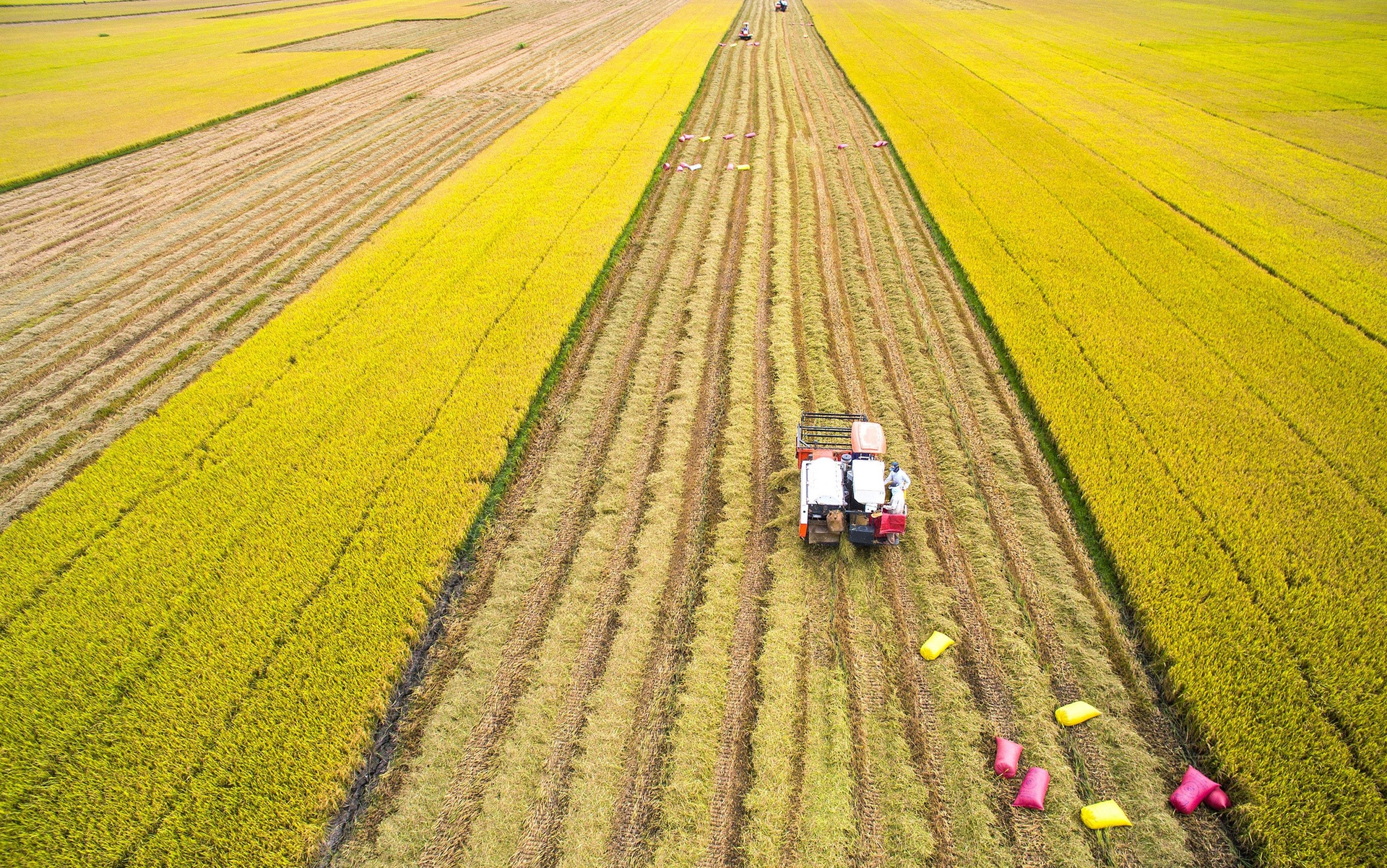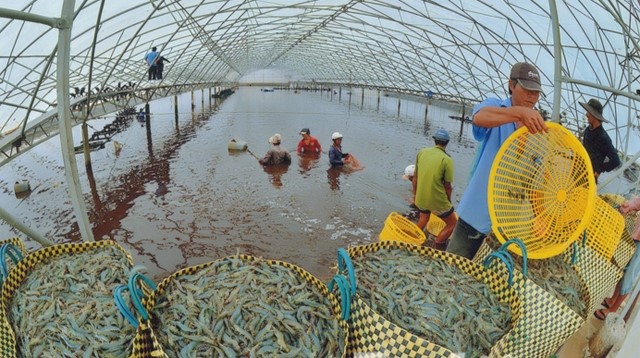May 26, 2025 | 17:05 GMT +7
May 26, 2025 | 17:05 GMT +7
Hotline: 0913.378.918
May 26, 2025 | 17:05 GMT +7
Hotline: 0913.378.918
The Organization for Economic Co-operation and Development (OECD) and the Food and Agriculture Organization (FAO) of the United Nations recently provide an assessment of the ten-year outlook (2023-2032) for the agricultural commodity and fisheries market at national, regional and global levels amid continued risks to the global economy and high energy prices.
The Agricultural Outlook 2023 - 2032 is a collaborative effort between the OECD and FAO, prepared using information input from member countries and international commodity organizations. The basis of the projections in this outlook for the next decade takes into account the World Economic Report of the International Monetary Fund (IMF).

According to the Agricultural Outlook 2023 - 2032, growth in global crop production will be driven primarily by increased productivity rather than increased land use.
According to the Agricultural Outlook 2023 - 2032, growth in global crop production will be driven primarily by increased productivity rather than increased land use. Therefore, investment in productivity enhancement and improvement of farm management is essential.
Assuming plant breeding and the transition to more intensive production systems show continuous progress, the yield of improved crops is predicted to account for 79% of global crop production growth, 15% of arable land expansion, and a 6% increase in crop strength during the ten-year period.
However, one fact remains: Production of crops such as oil palm and rapeseed has not increased in the major producing countries in the past ten years. More investment is thus needed to improve the yield of these crops.
Similar to trends in crop production, a large portion of the projected 1.3% annual growth in livestock will result from improved productivity per animal thanks to more efficient management of herds and higher feed intensity. Despite limited growth prospects, aquaculture already exceeded the expected global fisheries output in 2022.
Poultry is forecast to account for about half of global growth in terms of meat production which stems from sustainable profitability and favorable meat-feed price ratio. Pork production is still recovering from the outbreak of African Swine Fever (ASF) in East Asia and is expected to continue on its pre-crisis growth path for a few years. Global dairy production is projected to grow strongly over the next decade, with half of this growth occurring in India and Pakistan.

The COVID-19 pandemic has led to disruptions in trade around the world, but trade of agricultural commodities has proven to be resilient.
The Agricultural Outlook 2023-2032 emphasizes the significance of global agricultural greenhouse gas (GHG) emissions reduction, which are expected to increase by 7.6% over the next decade. At the global level, growth in greenhouse gas emissions will be lower than in the last decade and below the expected agricultural output growth (12.8%), indicating a faster decline in the carbon intensity of agroproduction.
However, pioneering efforts need to be broadly applied to ensure that agriculture makes an effective contribution to climate change mitigation, as set forth in the Paris Agreement, especially for livestock which is responsible for 80% of the increase in agricultural GHG emissions. At the same time, agricultural production systems need to face the challenge of adapting to climate change in expectation of more frequent and more intense extreme weather events in the future.
Mitigation and adaptation solutions include large-scale and comprehensive adoption of climate-smart, carbon-neutral processes and manufacturing technologies. Trade of primary agricultural commodities and processed products is forecast to grow in line with agroproduction over the next decade.
Russia's conflict with Ukraine has been affecting trade in agricultural goods, not to mention Ukraine is a major grain exporter that conducts trade through the Black Sea route. To alleviate the situation, the Black Sea Grain Initiative was agreed in July 2022 and the EU–Ukraine Solidarity Lanes helped and re-established trade to support global food security.
The Outlook’s baseline projections highlight the importance of a well-functioning, transparent and rules-based multilateral trading system. Export bans only exacerbate the adverse effects of price uncertainty and price increase. These results not only have a negative impact on global food security (and livelihoods) in the short term but also weaken the global supply capacity in the long term.
The medium-term forecasts in the Agricultural Outlook 2023 - 2032 are based on the assumption that existing policies will remain in place, consumer preferences and manufacturing technologies will evolve according to global trends. These may be uncertain assumptions about the environment, society, geopolitics and economic development. For example, a prolonged period of high inflation or a global recession will alter the projections. The scenario analysis presented in the Agricultural Outlook 2023 - 2032 provides an indication of the magnitude of such impacts.
Translated by Samuel Pham
/2025/05/25/4127-3-073637_820.jpg)
(VAN) Thanks to the promotion from an FAO-implemented project, vegetable production in greenhouses in Moc Chau has seen strong development, from 1.5 hectares in 2021 to nearly 50 hectares in 2024.

(VAN) FAO has recently supported USD 140,000 to implement the project 'Risk mitigation human-animal interface risks through disease control initiatives in pig farming.'

(VAN) The People's Committee of Tra Vinh province has approved an adjustment to the investment policy for the Green Hydrogen Plant project, increasing its area to approximately 52.76 hectares.
![Reducing emissions from rice fields: [2] Farmers’ commitment to the soil](https://t.ex-cdn.com/nongnghiepmoitruong.vn/608w/files/news/2025/05/05/dsc08881jpg-nongnghiep-140632.jpg)
(VAN) Clean rice cultivation model in Thuong Tan commune, Bac Tan Uyen district, is assisting local residents in achieving sustainable agriculture by substantially reducing costs, increasing productivity, and protecting the environment.

(VAN) At the conference to disseminate Resolution No. 68, AgriS introduced its digital agricultural ecosystem and reaffirmed its commitment to accompanying the Government in promoting private sector development and sustainable agriculture.

(VAN) 'Blue Ocean - Blue Foods' initiative is designed to restore marine ecosystems and establish sustainable livelihoods for local communities by cultivating a minimum of 1,000 hectares of cottonii seaweed in the first three years.
/2025/05/21/4642-3-112707_603.jpg)
(VAN) The V-SCOPE project has made direct contributions to three out of six pillars of the Comprehensive Strategic Partnership between Vietnam and Australia.